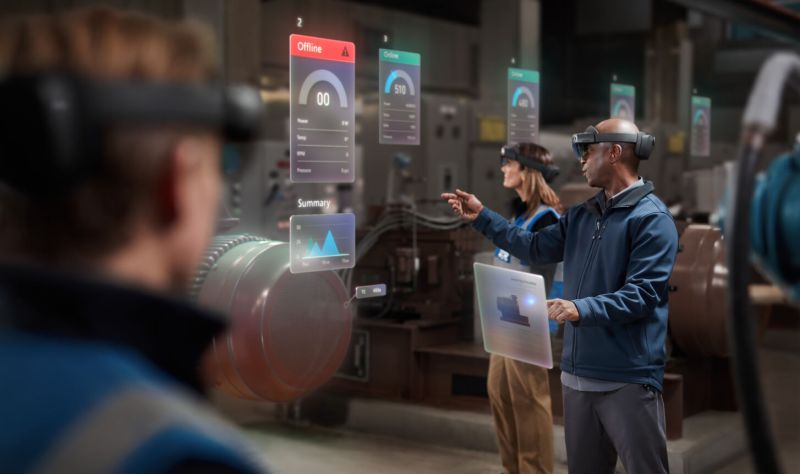Persistence is the ability to place things in space and make them stay in the same position over time. As such, persistent AR solutions enable the permanent placement of virtual content across multiple user sessions in an augmented scene. When you return to the AR application, you find the same content – such as objects and layouts – where you left it.
Snap’s city-scale AR grids, Niantic’s Lightship, Microsoft Azure Spatial Anchors, Google’s ARCore Cloud Anchors, and Apple’s ARKit Location Anchors exemplify the concept. Together they lay the foundations for metaverse experiences that map and augment the physical world.
How to persist content in AR one anchor at a time
Today, these companies explore the possibilities of persistent AR by providing developers with the necessary toolkits to build location-based applications. Thanks to such tools, developers can make use of “anchors” to connect the physical world locations with digital content. Anchors are objects that the AR software detects and tracks. A special type of anchor – cloud anchor– makes the things appear to stay in place in a given scene.
An example is Apple’s ARKit. The kit also includes the ARAnchor that determines the position and orientation of an item in a physical environment.
Applications can extend to mixed reality, as well. Microsoft Azure Spatial Anchors offers tools to build XR content to map and create persistent 3D content at a real-world scale. Developers can leverage it to build multiplayer mobile games, like Minecraft Earth and holographic scavenger hunts, for instance.

Shared persistent AR sessions pave the way for a real-world metaverse.
Among these companies is also the Lightship by Niantic – the publisher of the famous AR game Pokemon Go. It provides developers with the Visual Positioning System (VPS) to accurately localize users and place virtual objects in a real-world location so that they persist at the same locations. So, even if one user departs from that specific area, another user who arrives there will still be able to see the same thing.
As a result, Lightship’s VPS facilitates AR apps where multiple people can “see” a persistent object simultaneously from different perspectives. Because many people can share the same AR experience, one use case can, for example, be to offer sightseeing group tours. Based on the same VPS system, and the other developer tools provided by the company, it’s possible to build different types of shared AR sessions.
Metaverse use cases powered by persistent AR
Persistent meeting spaces
Shared AR experiences based on the same physical space are profound to future metaverse applications because they can help create virtual environments which are also collaborative. Coworking thrives if there’s a greater sense of presence in a real-time virtual meeting. In addition, thanks to persistence, spaces can contain precisely the same content visitors experienced in their previous sessions.
Therefore, a viable long-term application area is building virtual workspaces that empower creativity and decision-making. Microsoft Mesh was made for such use cases. It’s powered by the spatial anchors mentioned above. It also uses a technology called holoportation which enables users to project their photorealistic selves and builds a sense of presence. Microsoft Mesh is compatible with multiple devices, including HoloLens. Possible applications include virtual in-person training, getting remote expertise from specialists like physicians, and collaborating on creative projects like 3D design.
Large-scale city experiences
Snap is another prominent player in AR-based experiences. The messaging app has already been empowering developers to build creative AR lenses via Lens Studio. Now, through Lens Cloud, it’s becoming possible to participate in building city-scale AR experiences. Using the template provided by Snap, developers can create their own city-scale AR lenses. The template currently supports London, Downtown Los Angeles, and Snap’s hometown Santa Monica.

